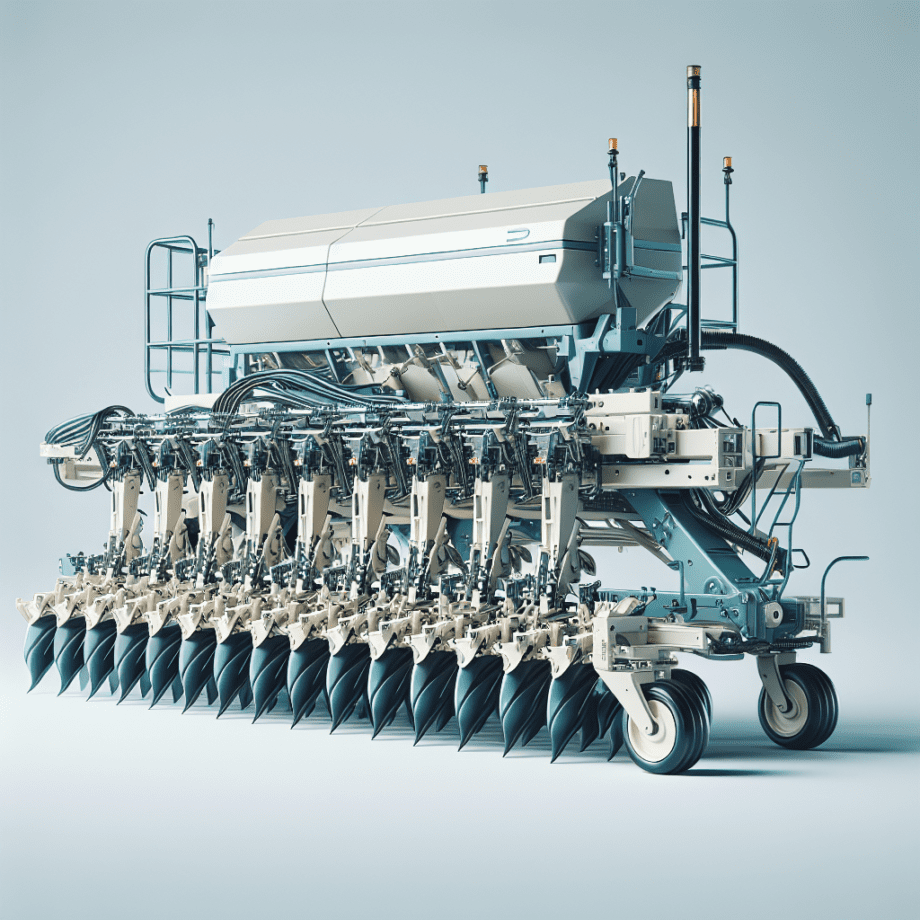Seed drills have revolutionized the agricultural industry by providing an efficient method for planting seeds, leading to better yields and more sustainable farming practices. This article delves into the mechanics, benefits, and advancements in seed drill technology, highlighting their importance in modern agriculture.
Understanding Seed Drills
Seed drills are agricultural machines designed to plant seeds at precise depths and intervals, ensuring optimal growth conditions. Unlike traditional broadcasting methods, where seeds are scattered randomly, seed drills place seeds in rows, which allows for better soil contact and more uniform germination. This precision planting technique minimizes seed wastage and maximizes crop yields.
Components and Functionality
A typical seed drill consists of several key components:
- Seed Hopper: This is the container that holds the seeds before they are planted. It is usually located at the top of the machine and can vary in size depending on the model.
- Metering Mechanism: This component controls the flow of seeds from the hopper to the soil. It ensures that seeds are released at a consistent rate, which is crucial for uniform planting.
- Seed Tubes: These tubes guide the seeds from the metering mechanism to the soil. They are designed to minimize seed damage and ensure accurate placement.
- Openers: These are the parts of the seed drill that create furrows in the soil. They can be disc openers, hoe openers, or tine openers, each suited for different soil types and conditions.
- Press Wheels: After the seeds are placed in the furrows, press wheels compact the soil around them, ensuring good soil-to-seed contact and promoting germination.
The operation of a seed drill is relatively straightforward. As the machine moves across the field, the openers create furrows in the soil. The metering mechanism releases seeds into the seed tubes, which then deposit the seeds into the furrows. Finally, the press wheels compact the soil over the seeds, completing the planting process.
Benefits of Using Seed Drills
The adoption of seed drills in agriculture offers numerous benefits, both for farmers and the environment. Some of the most significant advantages include:
Increased Efficiency
Seed drills significantly reduce the time and labor required for planting. Traditional methods, such as hand sowing or broadcasting, are labor-intensive and time-consuming. In contrast, seed drills can cover large areas quickly and with minimal human intervention. This increased efficiency allows farmers to plant more acres in less time, leading to higher productivity.
Improved Crop Yields
By planting seeds at precise depths and intervals, seed drills create optimal conditions for germination and growth. This precision planting ensures that each seed has enough space, nutrients, and water to develop into a healthy plant. As a result, crop yields are often higher and more consistent compared to traditional planting methods.
Reduced Seed Wastage
Seed drills minimize seed wastage by placing seeds exactly where they are needed. In traditional broadcasting methods, many seeds are lost due to uneven distribution, predation by birds, or being buried too deep in the soil. Seed drills address these issues by ensuring that each seed is planted at the right depth and spacing, reducing the overall amount of seed required.
Environmental Benefits
Using seed drills can also have positive environmental impacts. By promoting uniform plant growth, seed drills help reduce the need for chemical inputs such as fertilizers and pesticides. Additionally, the precise placement of seeds can reduce soil erosion and improve soil health over time. These environmental benefits contribute to more sustainable farming practices and help protect natural resources.
Advancements in Seed Drill Technology
As with many areas of agriculture, seed drill technology has seen significant advancements in recent years. Modern seed drills are equipped with a range of features designed to enhance their performance and ease of use.
Precision Agriculture
One of the most notable advancements in seed drill technology is the integration of precision agriculture techniques. GPS and sensor technologies allow seed drills to plant seeds with incredible accuracy, even in challenging field conditions. These technologies can also provide real-time data on soil conditions, seed placement, and machine performance, enabling farmers to make informed decisions and optimize their planting strategies.
Variable Rate Seeding
Variable rate seeding is another innovation that has transformed seed drill technology. This feature allows seed drills to adjust the seeding rate based on soil conditions, crop type, and other factors. By varying the seeding rate, farmers can ensure that each part of the field receives the optimal amount of seed, leading to more uniform crop growth and higher yields.
Automation and Connectivity
Automation and connectivity are becoming increasingly common in modern seed drills. Automated systems can control various aspects of the planting process, such as seed depth, spacing, and rate, reducing the need for manual adjustments. Connectivity features, such as wireless communication and cloud-based data storage, allow farmers to monitor and manage their seed drills remotely. These advancements make the planting process more efficient and less prone to human error.
Conclusion
Seed drills have become an indispensable tool in modern agriculture, offering numerous benefits in terms of efficiency, crop yields, and environmental sustainability. As technology continues to advance, seed drills are likely to become even more sophisticated, further enhancing their performance and ease of use. By adopting these innovative machines, farmers can improve their planting practices, achieve better yields, and contribute to more sustainable farming systems.
